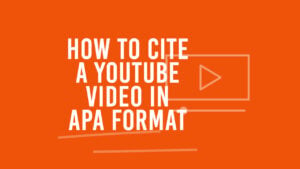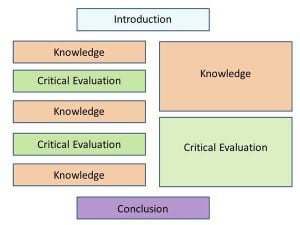Student Resources
Key Terms
- Synthesize
- Reference Page
- Abstract
- APA Format
Synthesize
Synthesizing simply means combining. Instead of summarizing the main points of each source in turn, you put together the ideas and findings of multiple sources in order to make an overall point. Your synthesis should show the reader where the sources overlap and where they diverge.
Learn More: How to Synthesize Written Information
Reference Page
The reference list is the final page of your paper where all sources you cited in the main text are listed. It should include the full details of all sources you cited in the main text, arranged alphabetically A-Z by author surname. Everything cited in the text must appear in the reference list, and everything in your reference page must be something you have referred to in text.
Learn More: APA Reference Page Formatting
Abstract
The abstract comes at the beginning of a research report. The purpose of the abstract is to give the reader a quick overview of the essential information before reading the entire article. The abstract should stand alone, and be “self-contained”, and make sense to the reader in isolation from the main article.
Learn More: How to Write an Abstract in APA Format
APA Format
The APA format is a set of citation and formatting guidelines for scholarly writing, developed by the American Psychological Association (APA). APA Style promotes consistency and uniformity in writing, enabling readers to (a) focus on the ideas being presented rather than formatting and (b) scan works quickly for key points, findings, and sources.
Learn More: APA Reference Page Formatting and Example
Frequent Asked Questions
if a source has three or more authors, you should use “et al.” in your in-text citation.
For example, if you are citing a source with three authors, your in-text citation would include the first author’s last name, followed by “et al.” and the year of publication:
Citations at the end of a sentence are placed in parentheses: (Jones, et al., 2010)
Citations can also follow a narrative format and be integrated into a sentence: Jones et al. (2020) posit…..
It is important to note that “et al.” is always used in the in-text citation, even if you include all of the authors’ names in the reference list. This is to avoid cluttering the text with long lists of names and to give credit to all of the authors of the source.
If paraphrasing or summarizing a source, you can either include the author’s last name and the year of publication in parentheses (brackets) at the end of the sentence or cite the source in a narrative format within the sentence.
Parenthetical: CBT is the most effective treatment for anxiety and depression (Jones, 2010).
Narrative: Jones (2010) posits that CBT s the most effective treatment for anxiety and depression.
If you are citing a direct quote, you would include the author’s last name, the year of publication, and the page number in parentheses at the end of the quote. For example: According to Jones (2020), ‘the best way to learn is to practice’ (p. 15).
In all cases, you would also need to include a full reference for the source in your reference list at the end of your document.
APA style formatting is a set of guidelines for formatting papers and citing sources in the social sciences. It is commonly used in psychology, education, and other fields.
Some key features of APA style formatting include:
- Use of 12-point Times New Roman font
- Double-spacing throughout the document
- Use of headings and subheadings to organize the content
- In-text citations that include the author’s last name and the year of publication
- A reference list at the end of the document that includes full citations for all sources cited in the paper
The Publication Manual of the American Psychological Association (APA) is the official guide for formatting papers and citing sources in APA style.





